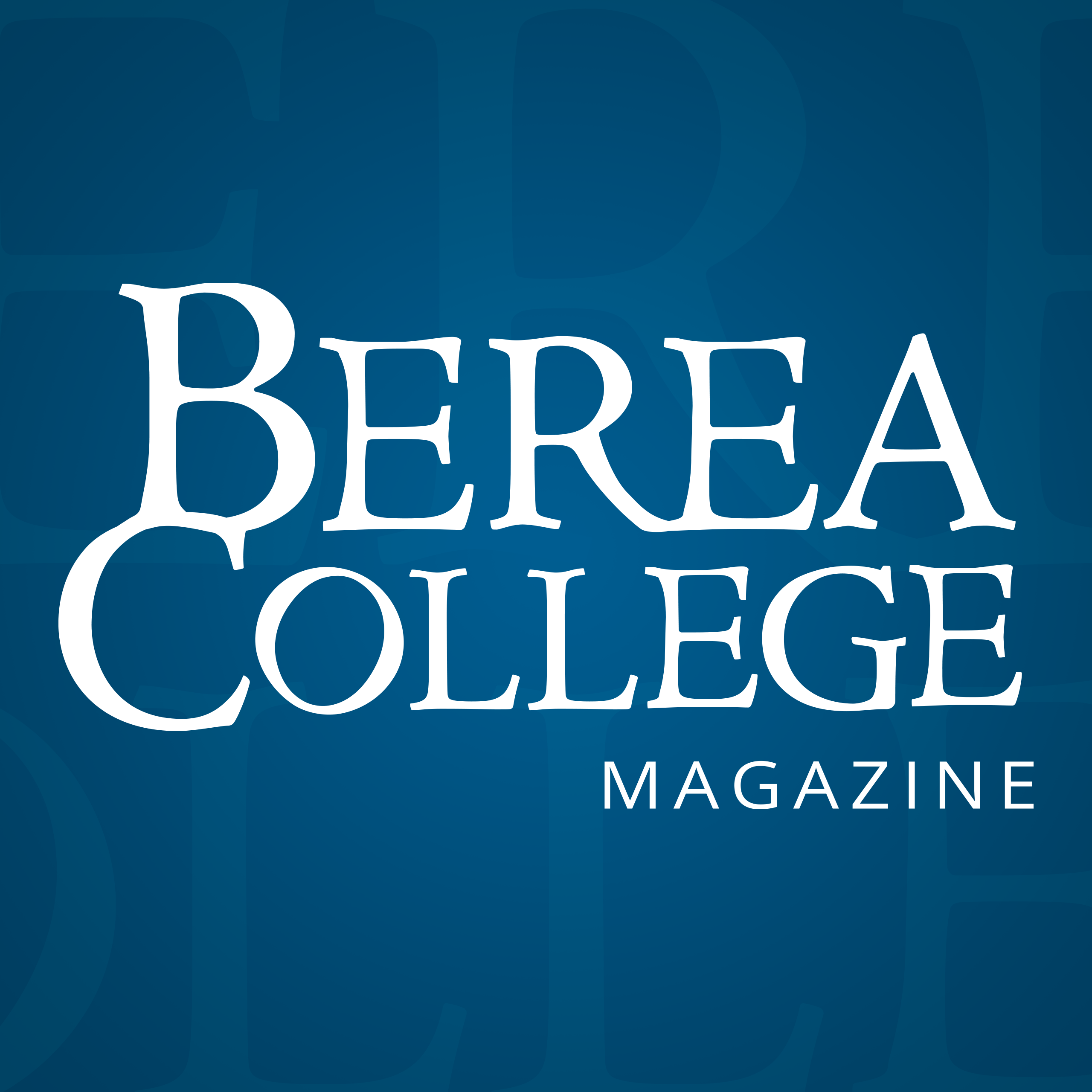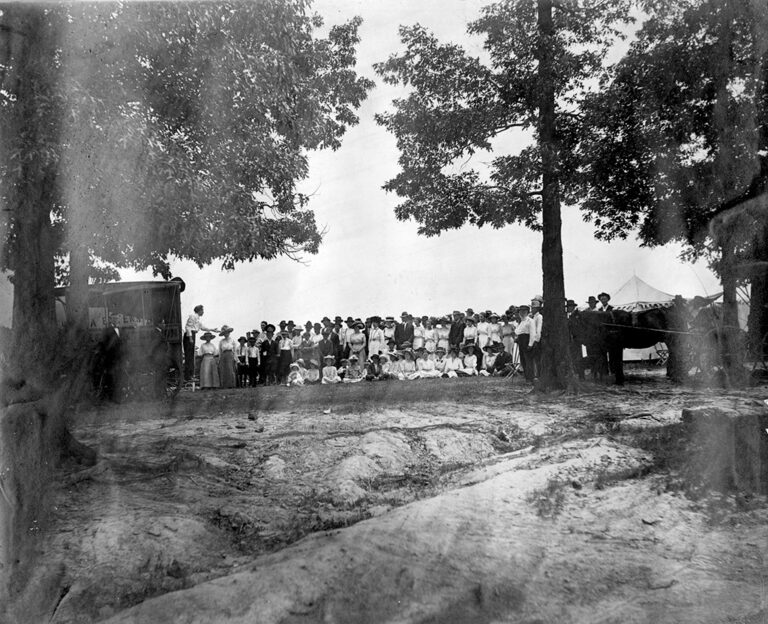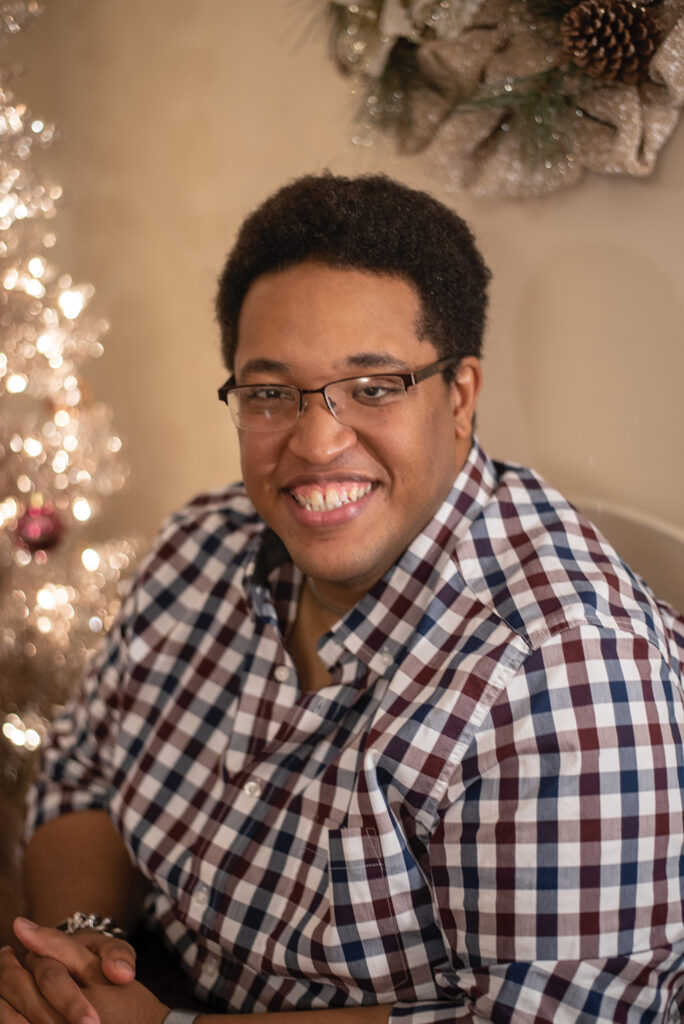Imagine a scene somewhere in eastern Kentucky, around 1914. A tent revival is underway. The preacher speaks for a while, then relinquishes the pulpit to a college professor, who speaks on the science of growing beans. This is followed by another sermon and a discussion of Shakespeare. The result is the edification of mind and soul, with a little practical application sprinkled in for good measure.
You might call it a democratization of knowledge, the idea that knowledge should be accessible and useful, and that everyone comes with a certain expertise that can be shared within the community. What you could not call it is elitist. This is education by and for the people. And until this little tent revival, this kind of education was reserved only for folks with the funds to acquire it.
“It is the desire of the Trustees to bring the advantages of the school, as far as possible, within the reach of all.”
So reads a Berea College fundraising pamphlet from 1875. The trustees mentioned include Rev. John G. Fee, the college founder; J. A. R. Rogers, Berea’s first professor; and Henry Fairchild, the first president of the school. That same year, Berea College boasted three graduates, two white, one black.
There were many more students on campus, working their way toward college and/or careers in what we know today as elementary, high and vocational schools. Berea was providing what the state could not for white and black students from the highlands and lowlands.
Educating both races together came from the founders’ chief objective: “to eradicate prejudice and caste.” They deemed their experiment successful, noting that whites often “come with their prejudices and return without them.”
To an audience they hope will join them in the pursuit, they regale with pride the eclectic makeup of commencement attendees, “the rich in their carriages from the plains, and the poor from the mountains on horses and mules” coming together and “listening to the speakers and singers of all shades of complexion.”
The scene they describe is nearly idyllic, but so is the goal that “no child shall be excluded on account of poverty.” This education was especially designed for students who could least afford it, and people came 60 miles on foot without a dollar to their name to get it. When they arrived in town, administrators helped students find work to support themselves while attending school. When William Goodell Frost took over the college presidency in 1892, he did away with tuition altogether and formalized the promise of work through the creation of the Labor program.
Frost made a number of important advancements for the cause. From the mountains, he brought traditional trades like woodworking and weaving, and he divided campus into various schools for students of varying intentions. In addition to the College, there was an industrial campus, a school for people who wanted to become teachers, a high school for students who wanted to go to college and a high school for students who did not.
Christopher Miller, college curator and associate director of the Loyal Jones Appalachian Center, maintains the artifacts of this College history. He describes Frost’s efforts as a true blending of classical education with practical knowledge, created with this specific cohort of students in mind.
“He had programs of different lengths,” Miller said. “At that time, Berea was in trimesters—fall, winter, spring—and part of it was that so many people worked in agriculture. Fall,
you’re doing harvest; spring, you’re doing planting.” For them, Frost introduced seasonal dormitories to
stay in while attending in the wintertime.
And at Berea, they could learn practically anything. In the early days of electricity, for example, schooling might include learning how to wire a house. Or, “if all you want to do is fix steam engines,” Miller said, “we’ll teach you how to fix steam engines. But if you want to learn the classics or learn
a little Greek, we can do that, too. That was pretty radical.”
From practical to personal
What was an education for everybody became an education also for the whole person, to include physical education and demonstrations of ways to build a better life.
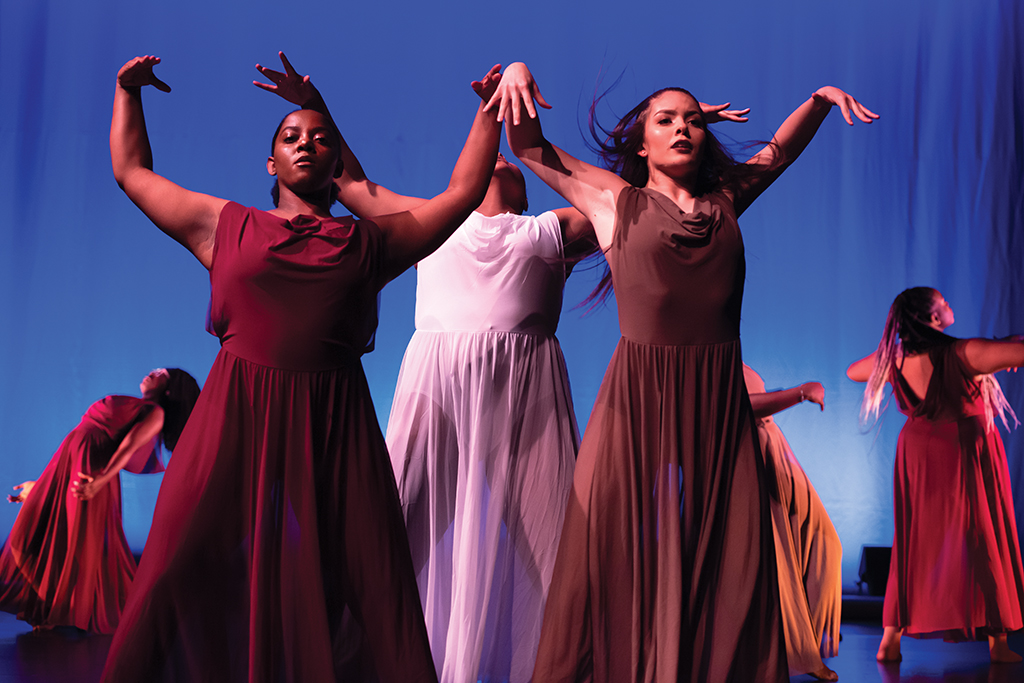
Before physical education instructor Oscar Gunkler came to campus in the 1930s, there was no dancing at Berea College, nor was there soccer or swimming. Gunkler brought with him the idea that the body as well as the mind should be educated. That expanded conception has grown into an integral part of the Berea experience through a continuation of folk dancing and modern wellness initiatives to encourage healthy living throughout the community.
And the requirement that students learn to swim still persists as part of the general education curriculum.
“We still have a swim requirement,” said Scott Steele, associate vice president and dean of curriculum and student success. “Some people think it’s strange, but many of us have seen students who don’t know how to swim, who are petrified of swimming, actually learn how to swim. The impact on these students is far-reaching and empowering. When they learn to do something they never thought they could, they walk a little taller and begin looking for other mountains to climb.”
At its most fundamental levels, educating everybody and the whole person is about personal empowerment. The student population mostly hails from areas and economic situations where empowerment is in short supply. In response, the present-day curriculum at Berea has been shaped to integrate those personal and life skills with the liberal arts and opportunities for professional training.
“There aren’t a lot of liberal arts colleges like us that have a business program, a technology and applied design program, agricultural and natural resources, education studies and nursing,” Steele said. “That’s a radical approach, the professional programs interwoven with our traditional humanities. We say we not only make the nurse, we make the nurse better. We make the accountant better by giving the accountant a business education in the context of the liberal arts.”
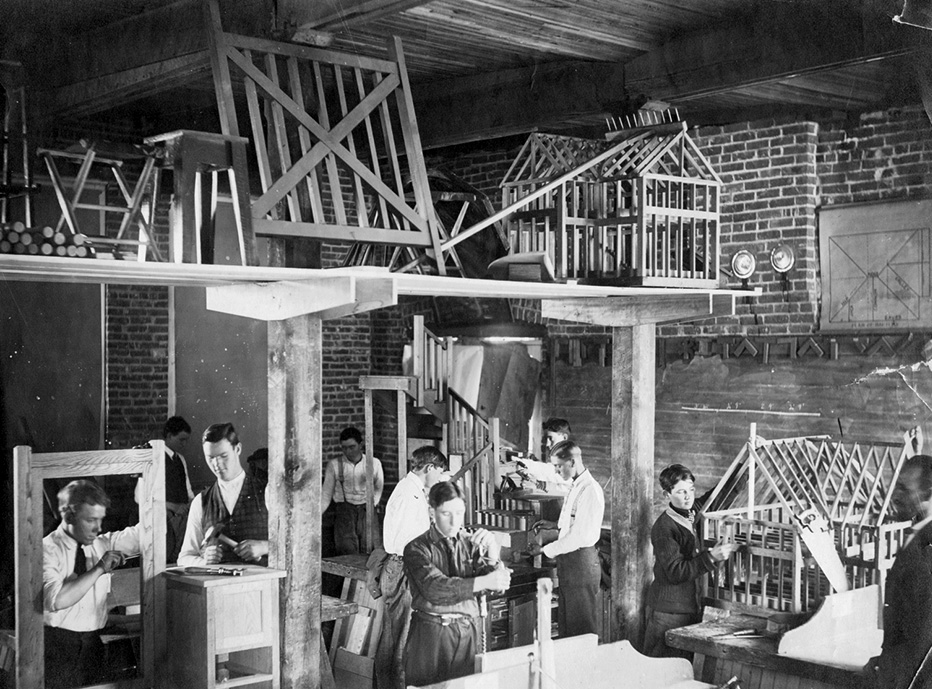
Also different from other institutions, a distinctive Berea College education includes a general education curriculum that spans a student’s entire career, rather than just the first two years. There are five classes total in the program known on campus by the initials “GSTR:” two writing seminars focusing on critical thinking, the liberal arts, identity and diversity, and/or College history. In addition, students take a course on the various interpretations and the impact of Christianity, a course in scientific literacy and a senior research course on contemporary global issues.
Steele says that after going into their respective major fields, students are brought back together their senior year to apply the knowledge they’ve gained to deep discussions of issues like global poverty, human migration, disease or climate change, among others.
“We bring all the students together from all majors,” Steele said, “so they are not sitting in a classroom with only the psychologists, not only with economists or chemists. This general education program is about educating the whole person.”
GSTR course topics are varied and lively, taught by instructors who bring their particular expertise to subjects like ethics and democracy, storytelling or popular culture. An expert in environmental studies uses the poetry of Wendell Berry to drive student compositions on people’s connection to the land. A physics professor brings his perspective to the ways people formulate and support viewpoints. And in the case of Emmanuel Joshua “E.J.” Stokes ’08, assistant professor of music and director of the Berea College Black Music Ensemble, Christianity is explored through a musical lens.
Stokes experienced the curriculum he now teaches as a student at Berea and was encouraged to examine his faith through an academic lens. “[The professor in that course] challenged all of us to look at our narratives of faith and understand why we believe what we believe rather than relying on what somebody told us,” he said. “It really helped us reframe and reshape and learn to see the world in a different way.”
Stokes describes the general education program as an eye-opening experience. “I was in class with people from all over the world,” he recalled. “Being from a small town in Tennessee, I’d never had class with international students before, so getting to have that experience with representation was really awesome. It set me up to say, ‘Oh, perhaps I’m not always right. Perhaps there are other viewpoints I should take into account.’”
I think our general studies program does a really good job of allowing space for people to know that their narrative contributes to others’ educational experience. Everybody is getting to help everybody. Everybody is learning together.
E.J. Stokes ’08
Stokes brings a breadth of perspectives to his junior-level general studies course, approaching his Understandings of Christianity class through his specialty of music. The class examines hip-hop artists who cross over into gospel, the content of southern spirituals and even the darker side of the spectrum, hymnals used by the Ku Klux Klan.
In his senior-level general studies class, Stokes guides students through a Seminar in Contemporary Global Issues in a way that incorporates students’ native, regional perspectives. The class looks at the context of Appalachia in the United States and uses that to better understand other resource-rich areas in the world to discover the similarities and challenges. In this research-centered course, students look at coal mining in Wales and mountaintop removal in Romania.
“I think our general studies program does a really good job of allowing space for people to know that their narrative contributes to others’ educational experience,” he said. “Everybody is getting to help everybody. Everybody is learning together. We can learn and try new things. We can have new challenges, but together we get to grow and move forward.”
“At the core of the general studies teaching is the humanity of everyone,” Stokes continued. “We do it in a way that is radically, uniquely Berean.”
